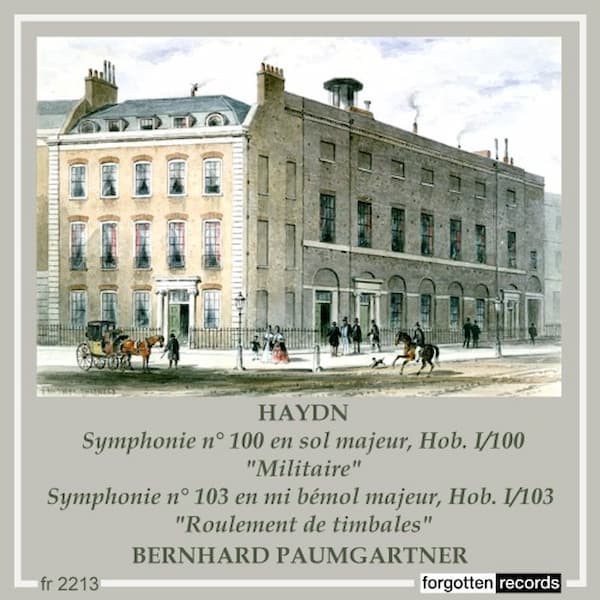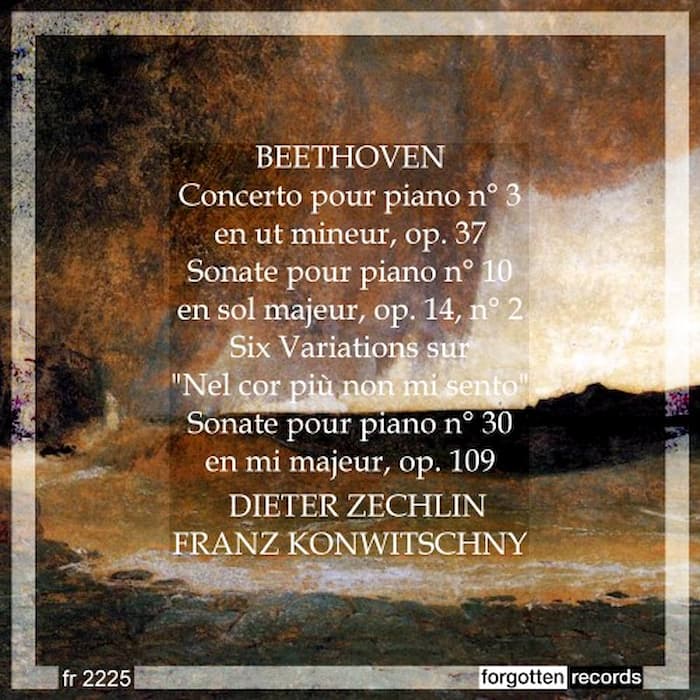Michael Haydn (1737–1806), the younger brother of Joseph Haydn (1732–1809), also had a career in music, smoothed by his older brother’s success in Vienna.
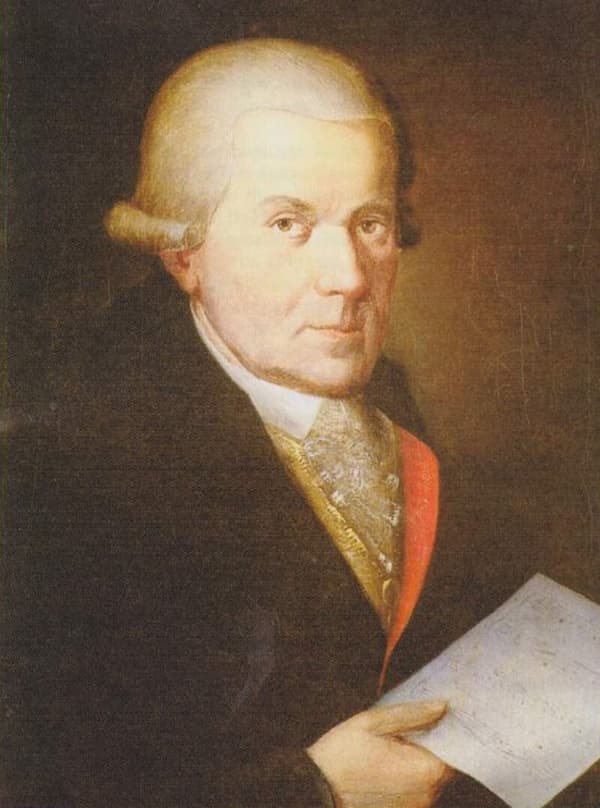
Franz Xaver Hornöck: Michael Haydn, ca 1895 (private collection, on loan to the Johann Michael Haydn Gesellschaft)
Like Joseph, he started his career in the choir of St Stephen’s Cathedral, Vienna, at age 8 as a boy soprano. By the time he was 12, he was a substitute organist at the cathedral and was performing his own music there. Reports from the time indicate that Michael was a better student than his older brother and had a better soprano voice, too. Michael left the choir at age 16 when his voice broke. By 1762, he was concertmaster at Salzburg, where he remained for the next 44 years, writing some 360 compositions. In Salzburg, he was a friend of the young Mozart.
Joseph admired Michael’s compositions, stating that his sacred compositions were better than his own. Michael’s are intimate in their devotion, compared with Joseph’s more monumental style. With Joseph’s decline and retirement around 1802, Michael was offered a position by the Esterházy family, which he did not accept.
His string quintet in C major, written in 1773, was his first work in the quintet genre, and for many years, the work was thought to be by Joseph. It opens with a single theme that drives everything. It’s only in the closing of the exposition that a new theme is introduced, and another new theme pops up in the development section.
This quintet used the Italian idea of paired instrument groups: violins as one pair, and the violas as the other, with the occasional cross-over of a pairing of a violin and viola. Since the pairs, in effect, competed, this leads to duplicate thematic sections to accommodate both pairs. This was an influence on the early quintets of Mozart, although Mozart carried it further. By the last of his 5 quintets, written in 1786, Michael had changed his priorities and downplayed the importance of Viola I that we hear in his first quintet.
Michael Haydn: String Quintet in C Major – I. Allegro
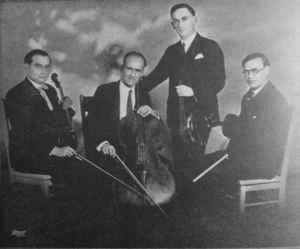
The Roth Quartet
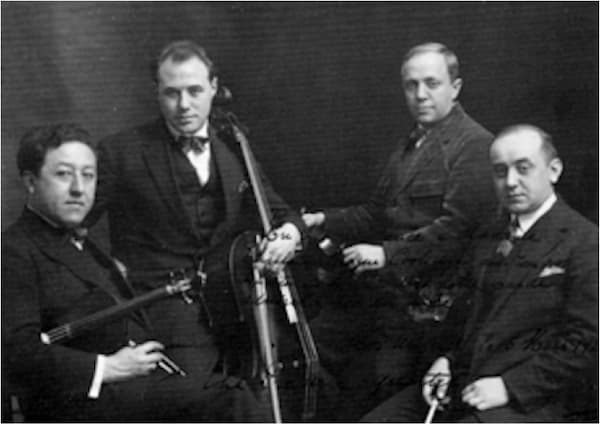
The Pro Arte Quartet, ca. 1930 (Alphone Onnou (violin), Robert Maas (cello), Laurent Halleux (violin), and Germaine Prévost (viola)) (Library of the Royal Conservatory of Brussels)
This performance was recorded in 1959 in Los Angeles by the Roth Quartet, with Laurent Halleux of the Los Angeles Philharmonic added on viola.
The Roth Quartet was founded by Feri Roth in Budapest in 1922 and made its debut in Paris in 1924. They took their first trip to the US under the sponsorship of Elizabeth Sprague Coolidge, and did a tour of the US, Canada, and Mexico. They soon moved to the US with the political changes in Europe and in 1937, were part of the faculty of Westminster Choir College in New Jersey. Roth disbanded this first ensemble in 1939 when he left Westminster and formed another one with members of the Manhattan String Quartet. In 1947, Roth was on the faculty of the UCLA Department of Music and formed a third version of the quartet, the one heard on his album, with himself and Thomas Marrocco on violin, Irving Weinstein as violist, and Cesare Pascarella on cello. All members except Weinstein were on the music faculty at UCLA.
Laurent Halleux, former second violinist of the Pro Arte Quartet, had been one of the original members of the quartet, which was founded in Brussels in 1912. Like the first Roth Quartet, the rise of Germany meant the emigration of the Quartet to the US. The Pro Arte Quartet’s residency at the University of Wisconsin–Madison was a result of their being stranded in the US while on tour. Their residency was the first for a major American university. Halleux left the Pro Arte Quartet in 1932 and successively joined the Roth Quartet, the New London String Quartet and the Hungarian String Quartet before moving to Los Angeles in 1945 to work with the Los Angeles Philharmonic. He was also part of Metro-Goldwyn-Mayer’s and RKO Pictures’ recording studios for film music.
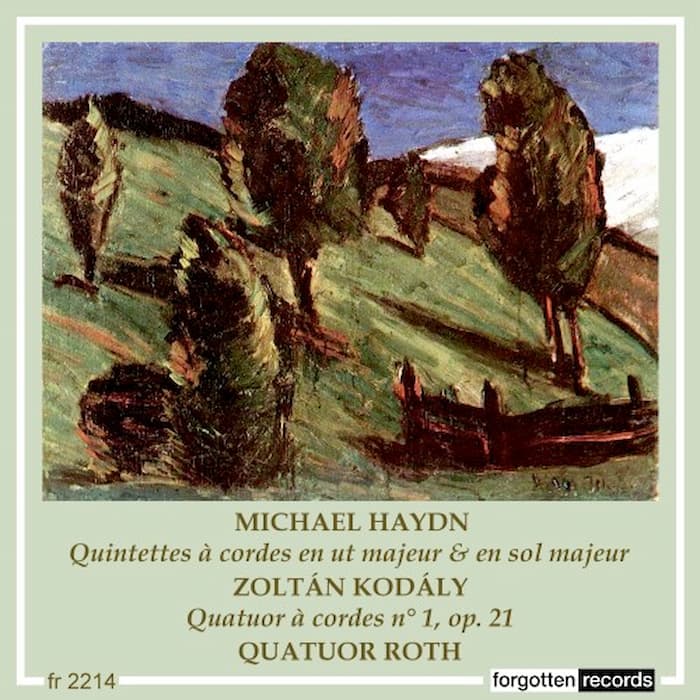
Performed by
Quatuor Roth
Laurent Halleux
Recorded in 1959
Official Website
For more of the best in classical music, sign up for our E-Newsletter

